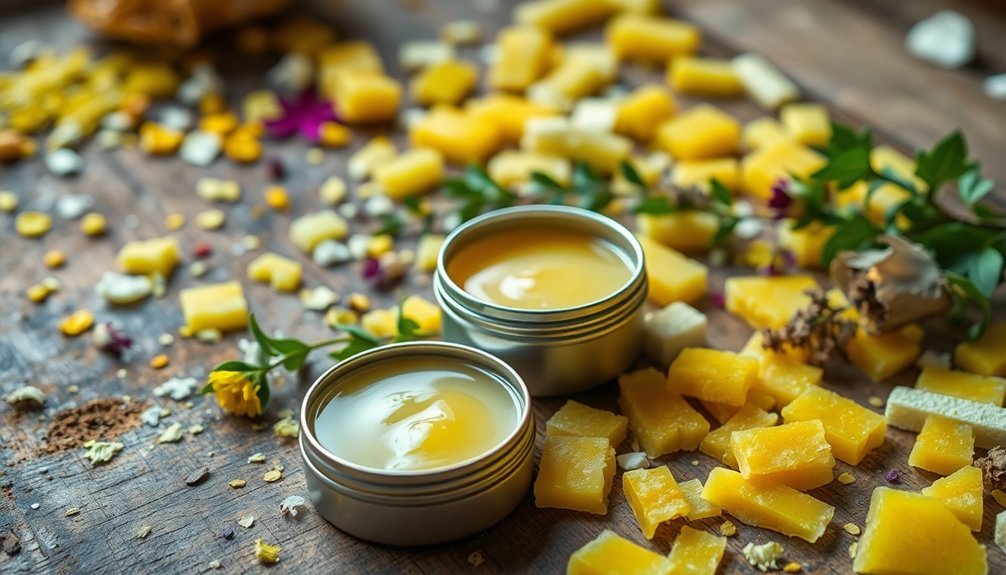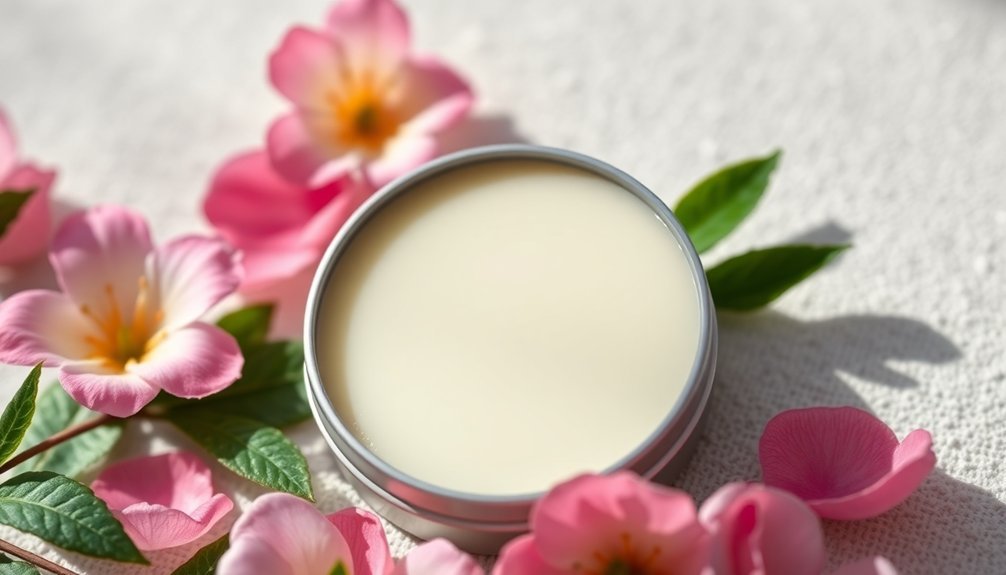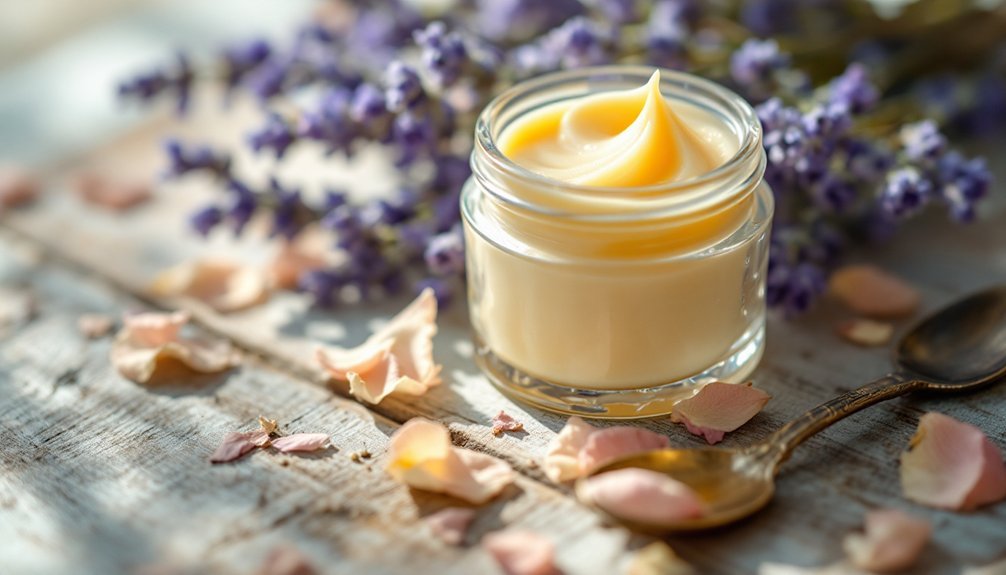You'll create beautiful, long-lasting solid perfumes by mastering three essential techniques: using natural waxes, blending essential oils, and applying to pulse points. Start with beeswax as your sustainable base, then add 50-60 drops of essential oils per 2 tablespoons of wax for the perfect scent intensity. Focus on neck, wrists, and behind ears for ideal fragrance diffusion. These foundational secrets will open up a world of natural perfumery possibilities.
Why Natural Waxes Are Your Best Base for Solid Perfumes

Natural waxes form the foundation of sustainable, skin-friendly solid perfumes. You'll find beeswax leading the pack with its unique protective properties and ideal melting point of 90°C, making it perfect for blending with carrier oils.
When you combine beeswax with nourishing ingredients like coconut oil, shea butter, or jojoba oil, you create a stable, moisturizing base that won't irritate your skin. Starting with small test batches helps you perfect your formula without wasting precious ingredients.
These natural waxes aren't just good for your skin – they're great for the planet too. You'll reduce plastic waste and packaging while creating a spill-proof, travel-friendly product.
Plus, you can customize your scents by adding essential oils to the base. The wax acts as a natural emulsifier, ensuring your fragrances blend perfectly and stay fresh longer than traditional alcohol-based perfumes.
The Perfect Essential Oil Ratios for Long-Lasting Scents
Once you've prepared your perfect wax base, mastering the right essential oil ratios will determine your solid perfume's success. The key lies in balancing top, middle, and base notes while incorporating fixatives to extend your fragrance's longevity.
For ideal results, aim for 50-60 drops of essential oils per 2 tablespoons of wax, adjusting to 15-20 drops per tablespoon for milder scents. Using a double boiler setup helps ensure even distribution of essential oils throughout the melted wax mixture.
- Blend 10-20% top notes (citrus oils) for initial impact
- Include 40-60% middle notes (florals or spices) for depth
- Add 20-40% base notes (woods or resins) for lasting power
- Use fixatives like cedarwood or vetiver to slow evaporation
- Test small batches to perfect your unique combinations
Remember to experiment with proven combinations like citrus blends (8 drops lemon, 8 drops orange, 10 drops lavender) or woodsy scents (12 drops cedarwood, 8 drops sandalwood, 9 drops bergamot).
Pulse Point Application Techniques That Make Your Fragrance Last

Strategic placement of your solid perfume can dramatically enhance its staying power throughout the day. Focus on applying your solid perfume to key pulse points where your body naturally emits heat.
Start with your neck and wrists, where the thin skin allows for ideal scent diffusion. Don't forget the often-overlooked spots behind your ears and inside your elbows. A gentle application to your nape area will release fragrance with every head movement.
You'll want to avoid rubbing the perfume into your skin, as this can break down the fragrance molecules. Instead, gently pat the solid perfume onto your pulse points.
For extra longevity, layer your solid perfume with a matching body oil or lotion. During warmer months, try applying the fragrance behind your knees – this unexpected spot helps distribute the scent as you move.
Frequently Asked Questions
How Do You Clean and Reuse Solid Perfume Containers?
You'll need to wash your solid perfume container with warm, soapy water, then scrub with a vinegar-rice mixture. Rinse thoroughly and dry completely before refilling. Don't reuse plastic containers—stick to glass.
Can Solid Perfumes Stain Clothing or Jewelry?
Yes, solid perfumes can stain your clothes and damage jewelry. You'll want to avoid direct contact with fabrics and remove jewelry before application. The oils and waxes can leave marks and tarnish metals.
What's the Typical Shelf Life of Homemade Solid Perfumes?
Your homemade solid perfumes typically last 6-12 months when stored properly. You'll know it's time to replace them if you notice changes in scent, color, or texture, or if they develop an off-putting smell.
Do Solid Perfumes Work Well in Hot or Humid Climates?
You'll find solid perfumes work in hot and humid climates, but you'll need more frequent reapplication in heat. The humidity can actually help trap scents, while moisturizing ingredients benefit your skin in both conditions.
Can I Melt and Reshape My Solid Perfume if It Becomes Damaged?
Yes, you can re-melt and reshape your damaged solid perfume using a double boiler or microwave. Just be careful not to overheat it, as high temperatures can affect the fragrance oils' quality.





Leave a Reply